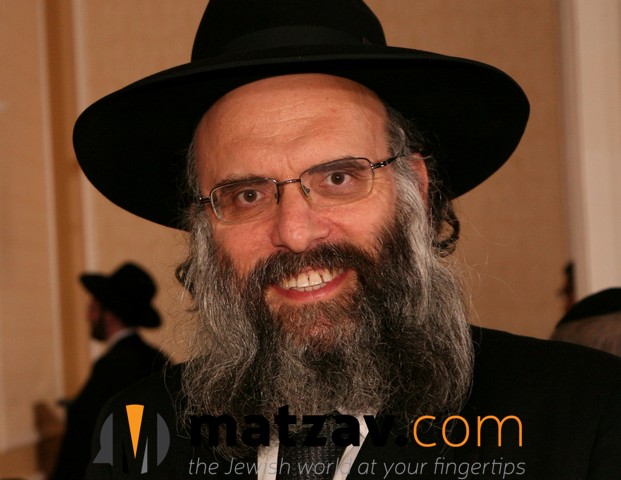
By Rabbi Yehoshua Berman
ויקם שדה עפרון…לאברהם למקנה…ויקם השדה…לאברהם לאחזת קבר כג:יז-כ
The question that the Rishonim grapple with is why does there seem to be an unnecessary repetition of the statement that the field of Efron became – through the purchase – the property of Avraham Avinu?
Rashi’s answer to this question is that the second expression of vayakam is not referring to the legal acquisition of the field; rather it is an implication of stature (mi’lashon tekumah). Because the field became the property of Avraham avinu, it was spiritually elevated.
The Rashbam takes a different angle, highlighting the different expressions adjacent to the word vayakam. The first vayakam is joined by the word miknah, acquisition, whereas the second vayakam is joined by the words la’achuzas kaver, as a burial area. So, says the Rashbam, the first vayakam is referring to the fact that the ownership of the field was transferred – through the payment of the money – from Efron to Avraham avinu. The second vayakam, though, is in reference to the field’s designation as a cemetery. Further underscoring this approach, adds the Rashbam, is the fact that by the first vayakam it sayssedei Efron, the field of Efron, whereas by the second vayakam it says mei’eis bnei Cheis, from the People of Cheis. In other words, as far as the private transaction is concerned, that was between Efron and Avraham avinu. Avraham avinu paid the money to Efron – who was, after all, the private owner of this field – and thereby acquired it for himself. However, the “acquisition” of designating the field as a cemetery for his family, that was from the People of Cheis. What does that mean? There is a halachah that to designate a certain site as a cemetery, one has to have the agreement of the townspeople. As such, Avraham avinu could not “acquire” the field as a family burial plot simply by buying the field from Efron. For that specific designation, he had to have the agreement of the townspeople. Hence, by the second vayakam it says mei’eis bnei Cheis, from the People of Cheis.
From my grandfather, Rav Yosef Dov Soloveitchik zt”l, I heard another approach. I subsequently saw this explanation in the Meshech Chochmah as well. The Gemara towards the end of perek Chezkas Ha’Batim (in Bava Basra) says that when a Jew buys a field from a Goy, the field indeed is removed from the Goy’s ownership by the cash payment (kinyan kesef); however, it does not become the full acquisition of the Jew who is buying it from the Goy until the Jewish purchaser makes a chazakah. The reason for this, says the Gemara, is that “lo samcha daateih” – the Jewish buyer does not have full faith in the validity of the transaction until he sees that he is making use of the property and the non-Jewish seller is not attempting to renege or any way intervene. The examples that the Gemara gives of a chazakah are locking up the field, banging open a gateway in the wall or fence surrounding the field, or putting up a fence or wall around the field. It goes without saying, though, that burying one’s deceased in the field is most certainly a valid form of chazakah. Accordingly, the first vayakam is referring to the field leaving Efron’s ownership as a result of the cash payment that Avraham avinu made for the field, and the second vayakam is referring to the field becoming the full possession of Avraham avinu after – as the pesukim in the interim state – he buried Sarah imeinu therein. Because he executed an act of chazakah – making use of the field by burying Sarah imeinu therein– the field became his full-fledged possession.
Parenthetically, there is a halachah that it is forbidden to derive and personal benefit from a beis ha’kevaros (cemetery). The Shiltei Giborim adds that this is the case not only for the area of the field where there are already people buried there, but even for the part of the field that still is completely empty – as long as it has already been set aside to serve as a cemetery – that too is already assur b’hanaah (forbidden to derive personal benefit therefrom). A beis ha’kevaros, elaborates the Shiltei Giborim, has the same status of kedushah as a Shul. Once the area is huktzah l’mitzvaso – set aside and designated for the purpose of fulfilling the mitzvah of burying the dead – it becomes forbidden for the derivation of personal benefit. No different than a Shul. It is important to bear this in mind when visiting kivrei tzaddikim, such as the burial places of the Arizal and the Beis Yosef in Tzfas, to understand that one is not “taking an excursion” to a beis ha’kevaros. It is not a tiyul. Eating and drinking are not allowed inside of a beis ha’kevaros (just like in a Shul these activities are forbidden), and one may not sit down on any of the graves. It is a place of kedushah, and that is something that it is important to remain cognizant of.
Based on this halachah, the Chasam Sofer asks a question on the Gemara in Brachos that says a pious man once went to sleep in a cemetery when his wife got into a quarrel with him. How could he do that? Isn’t it forbidden to derive personal benefit from a cemetery? The answer, says the Chasam Sofer, is that a cemetery has the same status as a Shul. When it comes to a Shul, talmidei chachamim who spend their days and nights primarily involved in learning Torah are allowed to take care of basic needs such as eating, drinking, and sleeping even while inside a Shul. Therefore, they are allowed to do so as well inside of a beis ha’kevaros.
(Audio recording)
{Matzav.com}











